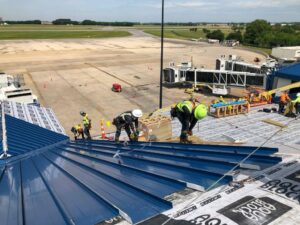Tropical Storm Rafael Forms, Heads Toward the Caribbean
As the summer draws to a close, residents across the southeastern United States are keeping a close watch on a new tropical storm forming in the Caribbean. Late Monday afternoon, Tropical Storm Rafael emerged over the warm waters of the Caribbean Sea, and meteorologists are predicting it may strengthen into a hurricane soon.
What to Expect from Tropical Storm Rafael
Initially, Rafael appeared ragged and disorganized, but as the day progressed, its structure improved with increased thunderstorm activity near its center. This is often a sign that a storm is gaining strength. By Tuesday, Rafael is expected to be upgraded to a hurricane, marking it as the 11th hurricane of the season.
Tropical storm warnings are currently active for Jamaica, while the Cayman Islands are under a hurricane warning. The storm is anticipated to hit the Cayman Islands as a Category 1 hurricane, bringing sustained winds and heavy rains on Tuesday afternoon and evening. Those in Little Cayman and Cayman Brac should prepare for the worst, as they may experience winds gusting between 70 to 80 mph, along with 4 to 8 inches of rain.
Possible Intensification
There are indications that Rafael could further intensify into a Category 2 hurricane on Wednesday, as it traverses the warm ocean waters south of Cuba, where hurricane watches are in effect. The environment is quite conducive for strengthening due to warm water and the motion of air higher up in the atmosphere. This could enhance the storm’s capability to draw in more warm, humid air.
Impact on the United States
While the storm is not expected to make landfall on the U.S. mainland, its moisture could still impact parts of Florida and the southeastern states, including Georgia and South Carolina. Heavy rainfall could develop as early as Wednesday and continue into Thursday, particularly due to a decaying front merging with Rafael’s moisture. Some areas may see heavy and slow-moving showers, potentially causing local flooding.
In the past, there have been only four hurricane landfalls in the United States throughout November in over 170 years of recordkeeping. However, the Caribbean remains warm enough this time of year to support tropical storm development. So far this hurricane season, activity has been about 25 percent above average, with five storms making landfall in the U.S.
Storm Timeline
Looking ahead, Rafael is forecasted to sideswipe Jamaica late Monday into early Tuesday, where heavy rainfall of 3 to 6 inches is likely, along with winds exceeding 50 mph. Once it enters the Gulf of Mexico on Wednesday night, it is expected to track northwest into the central Gulf by the weekend.
As the storm moves towards the Gulf Coast, it should encounter some challenges that could weaken it. Disruptive jet stream winds, dry air, and cooler waters can all diminish the storm’s energy. The impact of these factors will become clearer in the coming days, particularly as forecasters continue to monitor its path.
Other Weather Systems
Meanwhile, another weather system named Patty formed over the weekend near the Azores. It passed over the Portuguese islands as a subtropical storm but weakened later on Monday. Additionally, there is a weak system near Hispaniola, though it is not expected to develop further.
As residents in the southeastern United States prepare for potential rain and wind from Tropical Storm Rafael, officials are urging everyone to stay informed about the latest storm updates, as conditions can change rapidly within the tropics.







